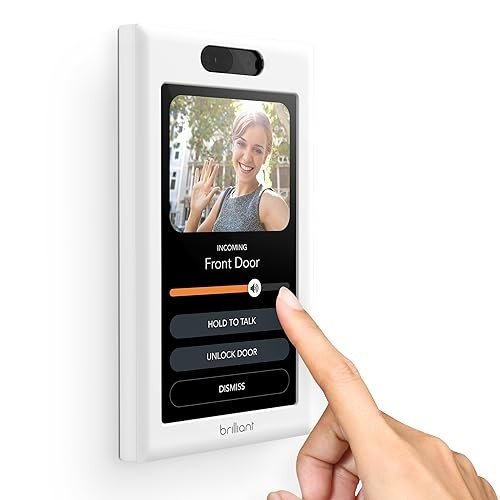10 Failing Answers To Common Interior Lighting UK Questions: Do You Know The Right Answers?
Interior Lighting in the UK: A Comprehensive Guide
Interior lighting plays an important function in producing an environment, enhancing performance, and revealing individual design within homes and services. In the UK, where the weather can be unforeseeable, efficient lighting is not just about aesthetics but also about making areas feel warm, inviting, and practical. This short article delves into different elements of interior lighting, incorporating types, trends, ideas, and often asked concerns.
Understanding the Importance of Interior Lighting
Lighting is typically thought about the foundation of interior decoration. It affects mood, performance, and the viewed size of areas. The right lighting can:
- Enhance the architectural functions of a room.
- Highlight artwork and decor.
- Improve safety and security.
- Impact efficiency in workspaces.
- Produce a comfortable atmosphere for relaxation.
Types of Interior Lighting
Efficient lighting design typically incorporates 3 main types of lighting: ambient, task, and accent.
1. Ambient Lighting
This is the primary source of light in a room, supplying total lighting. Typical sources include:
- Ceiling-mounted fixtures
- Chandeliers
- Recessed lighting
- Soft wall sconces
Ambient lighting creates a foundation from which other lighting types can construct upon.
2. Task Lighting
Task lighting concentrates on specific areas to help with activities such as reading, cooking, or working. This kind of lighting helps to reduce eye stress and can drastically affect performance. Typical sources include:
- Desk lamps
- Under-cabinet lights in kitchen areas
- Reading lamps beside beds
- Mounted lights focused on work surfaces
3. Accent Lighting
Accent lighting adds drama and highlights particular objects or locations, such as art work or architectural functions. This kind of lighting can produce visual interest and depth in an area. Sources include:
- Picture lights
- Decorative lamps
- Uplighters
- LED strip lights along racks
Using a combination of these lighting types can lead to a healthy and multifunctional area.
Popular Lighting Trends in the UK
The interior lighting landscape in the UK continues to evolve, affected by design trends, technology, and customer choices. Here are some popular trends to enjoy:
Smart Lighting: The advent of smart technology has actually changed how people manage lighting in their homes. Smart bulbs and systems like Philips Hue allow users to manage brightness and color temperature level via their smart devices.
Minimalist Designs: Sleek, easy styles that mix perfectly with interiors are dominating the market. Pendant lights with delicate frames, LED strips, and geometric shapes are particularly trendy.
Industrial Lighting: This pattern showcases raw, uncovered materials. Metal fixtures and Edison bulbs provide a vintage touch that is both elegant and functional.
Eco-Friendly Options: With increasing awareness of sustainability, numerous customers are turning to energy-efficient LED alternatives and fixtures made from sustainable products.
Tips for Effective Interior Lighting Design
Designing an effective lighting strategy requires thoughtful factor to consider of various aspects. Here are some ideas:
Consider the Purpose of Each Room: Every space has a different function. Consider what activities will take place and what type of lighting will support those activities.
Layer Lighting: Employ numerous types of lighting within a room to develop depth and flexibility. Combine ambient, job, and accent lighting to boost both looks and functionality.
Usage Dimmers: Dimmers enable for control over brightness levels, enabling users to change lighting according to mood and time of day.
Include Natural Light: Make the most of natural light sources like windows. Usage light, reflective colors for walls and home furnishings to optimize brightness.
Consider Color Temperature: Different color temperature levels (determined in Kelvins) produce different atmospheres. go here (around 2700K-3000K) are cozy, while cooler temperature levels (4000K+) provide a more medical or energetic feel.
Interior Lighting Mistakes to Avoid
To produce a well-lit area, it's vital to avoid typical lighting pitfalls. Here are some errors to expect:
Underestimating Wattage: Insufficient wattage can cause dim, unwelcoming spaces.
Neglecting Scale: Fixtures that are too little for a room can look out of location, while large fixtures can overwhelm a space.
Over-reliance on Ceiling Lights: Relying entirely on overhead lighting can develop uninviting shadows; balance with additional lighting types.
Poor Placement: Misplaced lights can create areas that are too intense or too dark. Plan placements attentively.
Frequently asked question Section
1. What is the distinction between warm white and cool white light?
Warm white light (2700K to 3000K) develops a comfortable, welcoming atmosphere, perfect for living rooms and bed rooms, while cool white light (4000K to 5000K) is more suited for workspaces as it boosts concentration and clarity.
2. How can I take full advantage of natural light in my home?
To take full advantage of natural light, use light-colored walls, strategically place mirrors to show light, and choose for sheer window coverings that permit sunshine to pass through.
3. How do I pick the right light fixtures?
Think about the size of your space, the design of your decoration, and the function of the area. Guarantee the scale of fixtures complements the room and matches the overall aesthetic.
4. Are LED lights better than traditional bulbs?
Yes, LED lights are more energy-efficient, have a longer lifespan, and can offer a series of color temperatures, making them a more sustainable lighting option.
5. What should I do if particular areas of my room stay too dark?
Think about adding additional job or accent lighting to lighten up those locations. Floor lamps, wall sconces, or even strategically placed table lamps can help ease dark areas.
Interior lighting is an important aspect of home and company style across the UK. Comprehending the various types, present trends, and finest practices can assist property owners in developing areas that are not just elegant however also functional. With thoughtful consideration and planning, reliable lighting can change any environment, improving both ambiance and usability for years to come.
